Along the rust colored, arid, and rocky costal valleys of North Central Peru, within the Supe Valley resides an extensive archaeological site known as Caral. This is one of the most important archaeological sites on Earth and currently, crimes are in progress in Caral that are endangering the lives of archaeologists and may very well erase essential archaeological secrets from the pages of history.
Discovered in 1948 AD by American archaeologist Paul Kosok, Caral is a 150 hectare (370 acre) ancient complex containing hundreds of individual sites that date back as far as 2600 BC. This incredibly ancient and vast complex includes temples, pyramids, urban homes, plazas, and even so-called amphitheaters.
Kosok eventually received great acclaim for his discovery of a complex prehistoric water channeling system in Peru, and his later monumental discovery of the Nazca Lines. In the mid 90’s AD, Professor Ruth Shady expanded upon Kosok’s initial work and began to unravel the secrets of the site which she determined to be the oldest in the Andes.
In 2009 AD, it was announced that the ruined city was to be designated a UNESCO World Heritage Site. And now, this incredibly important archaeological site has resurfaced in the news due to what the mainstream media portrays as tensions between “squatters\land developers” and Professor Shady’s team.
But this is no untapped oil field or instance of deforestation. There is something much deeper and darker occurring in Caral than some interesting ruins being threatened by crooked developers. This is an attempt to prevent the upending of human history by the revelations this site will yield.
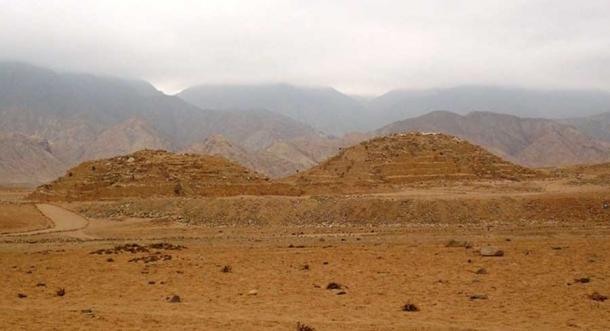
The remarkable pyramids of Caral, Peru that date back to the Old Kingdom period in Egypt. ( Percy Meza / CC BY 3.0 )
Problems In Caral And The Land Rights Narrative
According to media reports , archaeologist Professor Ruth Shady Solis of San Marcos University in Lima, has been at the center of a conflict between herself and a family of local land developers. She has been the victim of death threats, intimidation, and in 2003, the professor was shot in the chest during an assault at the ancient complex of Caral.
This corrupt group, whether they are called squatters, or developers, or a local family, have been targeting and raiding this deeply important historical site. Professor Shady Solis has repeatedly called upon local and national authorities to intervene. Allegedly, the group claims that a previous left-wing regime granted them title to the land as part of an agrarian development program. However, Professor Shady Solis has cleared demonstrated that the family holds no legitimate claims to the land and has been resorting to criminal behavior.
The Ignored Importance Of Caral: First City Of The Americas
Shady, and Creamer and Haas (an American husband-and-wife team), after a series of academic feuds, collaborated in the discovery and radiocarbon dating that revealed Caral to be the most ancient urban center in the Americas and the Andean origin of civilization. Their breakthrough analysis published in the journal Science pushed back the earliest known date of sophisticated Andean culture by 1000 years.
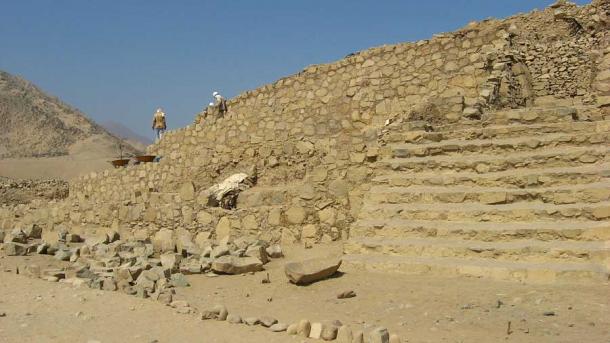
Archaeologists working on one of the ancient Caral structures in Peru. (I, KyleThayer / CC BY-SA 3.0 )
These early Andean inhabitants came before the “pottery” period. In other words, they existed in the preceramic period and yet they were engaging in massive platform mound building projects. In keeping with the conventional understanding of how the Americas were settled, this would mean then that they were building pyramids before they discovered how to fire clay or work metal.
It is difficult to overstate the significance of what all this means in relation to the entire Andean cradle of human civilization. If Caral is the original settlement, which then went on to influence its many mysterious contemporaries, the Chachapoyas, the Paracas, the Nazca, the Inca and the Moche cultures, then this ancient site has every indication that it is the proverbial Rosetta Stone key that enables scientists and historians to determine the origin of all these mysterious cultures.
Caral Academic Controversy #1
It should be noted that beyond the so-called land dispute mischief, there have also been multiple academic controversies regarding this site. American archaeologists Winifred Creamer and Jonathan Haas, working with the Field Museum and Northern Illinois University, were accused by Shady of plagiarism.
Creamer and Haas published an article in the journal Nature in which they took credit for radiocarbon dates that were done in the presence of Professor Shady who was left out of their findings. “Haas and Creamer are violating not only my intellectual rights as an archaeologist, but also the rights of a Peruvian research project whose authorship they intend to expropriate,” she said in a public statement.
Caral Academic Controversy #2
Not only is there intellectual and criminal conflict, but there is yet another conflict regarding what this means to the when, who, and how of Mesoamerican origination. This Norte Chico civilization (2600 BC) predates the Olmecs by thousands of years and was contemporary with the Egyptian Old Kingdom . So fundamental debates about Mesoamerican development have become a war of theories.
One faction consists of Ruth Shady Solis and her support of the theory developed by Michael Moseley of the University of Florida. Both argue that Caral was originally a fishing society with a point of origin further back than previously believed.
The other faction is that of American archaeologists Winifred Creamer and Jonathan Haas, who claim that Caral was part of much larger agricultural society that began in the valley and radiated out to the coast.

A panoramic view of the Caral complex site with the Andes in the background. (I, KyleThayer / CC BY-SA 3.0 )
The Colossal Caral Complex
What this means in an anthropological nutshell is that in as early as 2600 BC or possibly even as early as 3600 BC an organized and intelligent culture appeared in the Supe Valley of Peru. This group elected to construct a city that may have been the first on the continent in a grim desert from which they hand-hewed boulders and stones to make platform pyramids, circular sunken plazas, and honeycomb like living spaces. All of this before the wheel, pottery, or metal use and some say even before mass scale agriculture.
The acoustic properties of these so-called sunken plazas or amphitheaters are perhaps the most fascinating aspect as this is evidence of extremely high levels of sophistication. There can be no doubt as to the deliberate attempt to amplify acoustic effects for ritualistic purposes, and this is reinforced by the trove of ancient musical instruments discovered at Caral, including 32 bone flutes comprised of condor and pelican remains. Moreover, 37 cornett wind instruments, made from the bones of deer and llama, were likewise uncovered in the Supe Valley.
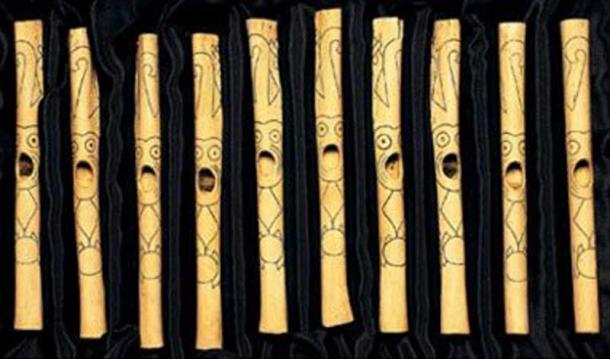
A selection of the bone flutes found at Caral. ( Real History ).
Protection By Legal Obligation
The various conflicts and crimes of this conundrum are challenging to sort out or make sense of. To begin with, we have death threats, the poisoning of a dog, the attempted murder of Professor Shady, and the destruction of internationally protected sites.
These “actions” are all obviously illegal and the responsibility of local Peruvian authorities to deal with. If Professor Shady and her team are aware of and have reported the identity of the hostile family in question, why then has there been no prosecution of them?
On another level, Peruvian national authorities have a legal mandate in place to protect citizens like Professor Shady from criminal conspiracy. And beyond that, the government has an obligation to protect this vast archaeological complex. A complex, once again, that holds within it the key to the first city in all the Americas.
It is fair to speculate that lucrative land development temptations have corrupted Peruvian authorities and prevented them from action. However, although this is easily imaginable, land development or disputes regarding its designation are mute, because the entire site was designated a UNESCO Word Heritage site in 2009 AD. In other words, even if local land developers succeeded in corrupting local authorities and intimidating archaeologists it is unlikely that their influence could possibly sway UNESCO which is an arm of the United Nations.
The point is that these archaeologists and this critical ancient site are supposed to be protected by local, national, and international authorities all of whom have binding legal obligations to protect and preserve the Caral site.
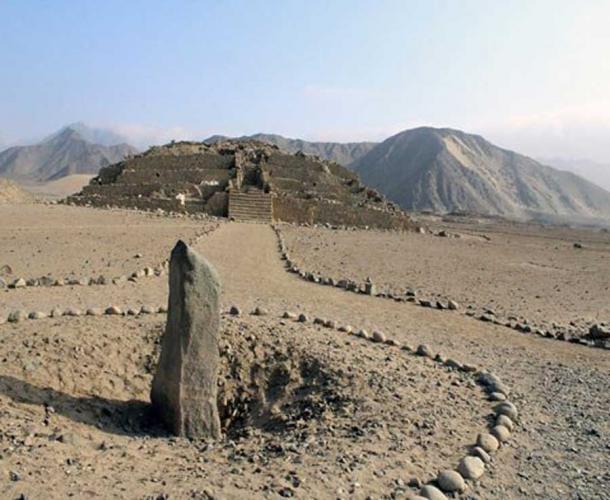
The Huanca monolith at the Caral complex. ( Goshen College )
Caral Legal Protection Continued
The definition of a world heritage site is as follows: “a natural or man-made site, area or structure recognized as being of outstanding international importance and therefore deserving of special protection.” The Peruvian government has spent tens of millions of dollars over the years to organizations like UNESCO who in exchange provide this “special” protection. How could crooked land developers confidently invest huge sums of money to unilaterally commence construction on a site which is legally protected as a World Heritage Site?
The Peruvian national government also has a long and deep relationship with institutions like The Smithsonian, and the National Geographic Society. Strangely, Shady has connections to such institutional authorities like her friend Betty Meggers (the former director of Latin American Archaeology at The Smithsonian Institute). Meggers attempted to intervene during the dispute of Shady versus Haas and Creamer when she sent a letter to the National Geographic Society. The National Geographic, by the way, also funded the work of Creamer and Haas.
Furthermore, National Geographic has an extremely intimate relationship with Peru dating back to the discovery of Machu Picchu. So, there can be no doubt that the Smithsonian, National Geographic Society, UNESCO, and the Peruvian national government are all perfectly aware of what is occurring. Even though some of these organizations are legally obligated to protect Caral they are collectively refusing to take action.
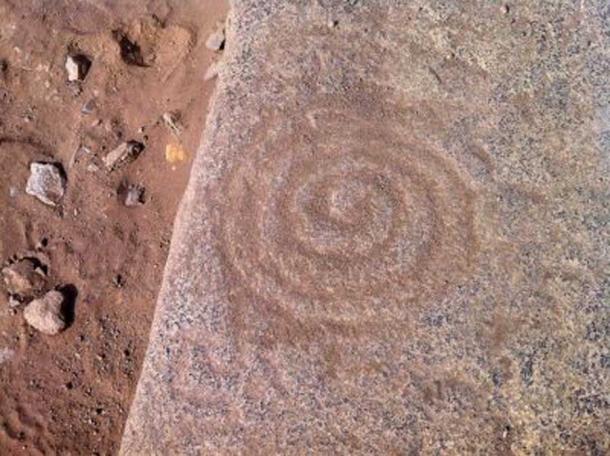
An ancient pattern carved into a stone at Caral. ( Goshen College )
Unanswered Questions That Might Explain These Conflicts
Why is it that such a highly acclaimed academic like Professor Ruth Shady Solis and such a precious site are being blatantly ignored by the authorities? Who exactly are these people who have committed some dozen or so “raids\invasions” at the ruins? How exactly would they come to believe that inflicting major but incomplete damage on ancient sites would somehow enable them to begin construction?
Even if these shadowy thugs were to suddenly complete their shiny new housing project, it seems that this enormous investment would inherently be vulnerable to government seizure due to its encroachment onto land designated as a heritage site.
What is the point of such institutions existing if they refuse to protect history as it is being wiped away before our very eyes? Could it be that perhaps it is not the development of this desert, which lies 150 miles north of Lima, that is the motive behind the thwarting of excavation, but rather, the concealment of the origin of civilization in the Americas?
Conclusions
The decoding of how pre-Columbia civilization emerged is an incredibly complex puzzle which stretches far back into prehistoric antiquity. This complicated web of rising and falling archaic cultures is even further mired in complexity by modern geopolitically motivated groups.
The Caral culture must have been a contemporary of the enigmatic Paracas culture who exhibited elongated skulls, auburn hair, and who may have had links to this Norte Chico culture.
Not far inland, the Chachapoya, although technically arising thousands of years later, may also have had influential ties to what must have been an older culture that previously dominated the region.
If these ominous signs are ignored then it is quite possible that the first chapter in the civilization of the Americas will be deleted from both history and the consciousness of present-day societies.
Top image: The eminent Peruvian archaeologist Ruth Shady who has been threatened over her attempts to protect the Caral-Chupacigarro site. Source: Zona Caral
By Mark A. Carpenter
References
Collyns, Dan. (3 January 2021). “Squatters issue death threats to archaeologist who discovered oldest city in the Americas.” The Guardian. Archived from the original on 3 January 2021.
Miller, Kenneth. “Showdown at the O.K. Caral: Archaeologists have an uncivilized fight over how civilization began in the Americas.” Discover Magazine. September 9 2005.
Moseley, Michael (1975). “The Maritime Foundations of Andean Civilization.” Menlo Park: Cummings.
Raymond, J. Scott (1981). “The Maritime Foundations of Andean Civilization: A Reconsideration of the Evidence.” American Antiquity. Society for American Archaeology.
 RSS Feed
RSS Feed















 March 3rd, 2021
March 3rd, 2021  Awake Goy
Awake Goy  Posted in
Posted in  Tags:
Tags: 













